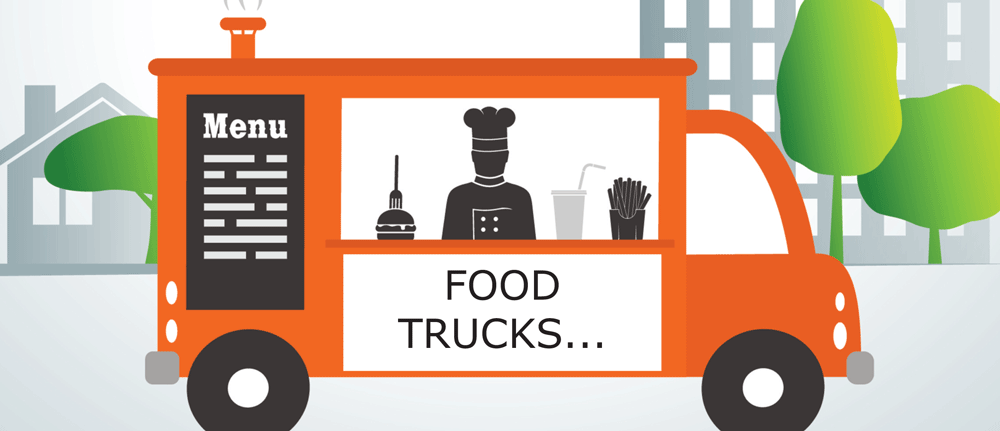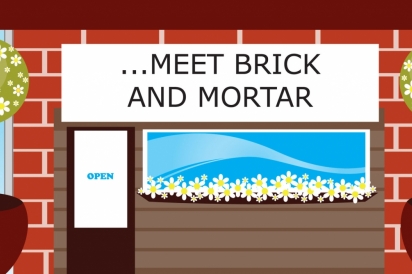Food Trucks Meet Brick and Mortar
Are you hardworking, realistic, patient and inquisitive? Can you get by on little sleep or maybe no sleep at all? Are you flexible enough to change your plans on a moment’s notice and calm enough to laugh off small disasters? Can you get up at the crack of dawn to shop for food, drive to far-off locations, prep food inside a hot truck and deliver tasty well-prepared food to long lines of hungry people for several hours with a smile on your face?
If you answered in the affirmative, then you’re just the kind of person who should own a food truck.
According to Tonya Saidi, owner of Mamma Toledo’s Pie Hole, if you want to run a food truck, “You have to be a little bit crazy and stubborn and you have to be OK with losing sleep.”
The Food Truck Industry
The food truck business has grown to a $1 billion industry over the last few years in part because of the lower initial outlay of cash to get started than it would take to open an actual restaurant. Depending on the size of the truck and the equipment needed, as little as $50,000 can get a truck on the road. We’re not talking about the industrial catering trucks, or roach coaches as they are often called, that show up at businesses offering quick breakfast and lunch options to workers who cannot leave their places of work. Food trucks, although they borrow a little from the catering trucks and a little from brick and mortar restaurants, are their own “thing.” Because the food truck is a unique phenomenon, the business tends to attract some very unique individuals.
Getting Started
Kat and brad Moore (Short leash Hotdogs), with backgrounds in art, design, soccer, retail and banking, hadn’t spent their lives dreaming of preparing food for the masses but dissatisfaction with corporate life led them to reevaluate how they wanted to live.
“We didn’t have restaurant experience or lots of capital but we could finance a truck ourselves and we figured we’d have an asset to sell if we didn’t succeed.”
It really wasn’t that different for Tonya Saidi. Although she grew up in a restaurant family, she never considered taking the plunge herself. While working as a certified nursing assistant (CnA) in a care home, she baked pies for the residents just because she wanted to brighten everyone’s day. No surprise, the pies did the trick. All who tasted her creations praised her for her skill. That gave Saidi the confidence to keep baking pies. She continued to regale co-workers at her next job at a title company with pies for birthdays and other celebrations. One thing led to another and soon she was baking to order for friends and relatives.
Saidi knew she didn’t want to spend her days tied to a desk. She wanted to find something to do that she would love that would also provide enough income so she could support her family.
While vacationing in Seattle, she finagled her way into working for a day with the owners of the fish market at Pike Street Market. She loved working directly with customers, selling them quality ingredients. Then and there she decided she’d find a way to go into the food service business when she returned to Phoenix.
For Saidi, pies were a no-brainer. She’d been baking them for years. but she wondered, “People love my pies when i gift them, but will they pay for them?” So she tested her pies at farmers’ markets to see if there was a demand. We all know how people respond to pie!
Keeping It Going
Running a food truck business isn’t very glamorous. A typical work day for Saidi is much longer than when she had a desk job. She might spend upwards of 10 hours baking pies and then at least one hour to load the truck. Then there’s the time driving to the location, setting up and the actual service time. Driving back to the bakery, unloading the truck and cleaning it so it’s ready for the next event makes for a very long day.
The Moores, on the other hand, didn’t have an already established relationship with hot dogs. They set their sights on something easy to prepare and something they knew they would enjoy feeding to people. Everyone loves hot dogs, so they settled on hot dogs.
After outfitting the truck, it took them about six to eight weeks of menu planning and taste testing to be ready. They started planning in January 2010 and opened at the Phoenix Public Market in June.
Moving to Brick and Mortar
Slowly their business plan evolved and the Moores decided their long-term goal was to open a restaurant. They had no place to store and prepare their food. Everything had to be done on the truck. That meant that they shopped for food early in the morning and then spent a few hours prepping on the truck before service. Logistically, it just made sense to have a restaurant where they could store ingredients and do their prep work.
“We were strategic and systematic about the planning for the restaurant,” says Brad Moore. For one full year, they parked at Camelback and Central on a vacant lot on First Fridays. There they tested recipes and figured out pricing. This was how they did their market research for their restaurant, which opened in 2013.
Although operating a food truck is different from running a restaurant, you still have to put out a quality product, you need innovative marketing and good customer service and you need to be disciplined and organized, according to Brad. So moving from food truck to restaurant, although it took planning, was a natural progression for them.
Saidi always intended to have a restaurant. As with most food truck entrepreneurs, it was just less expensive and easier to get started with a truck. it was a good way to test the waters without making a huge financial investment or committing to a lease. She originally shared a location with the Moores’ Short leash Hotdogs but quickly outgrew it and opened her own space in August 2014.
For the Moores, the biggest challenge of going from a food truck with just the two of them to working in a brick and mortar location with over 20 employees was learning and understanding the team culture component. They developed a mission and values statement because they wanted to clearly articulate their expectations for employees.
Looking to the Future
Although the Moores and Saidi now have well-established restaurants, they both continue to run their respective food truck businesses.
The secret to their success? They all agree: Put out a good product. Don’t be afraid of hard work. Do your research. And a little bit of luck doesn’t hurt either.






